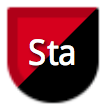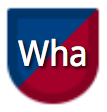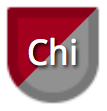Welcome back for the fourth in our series of posts offering analysis of the data we are receiving on MBA DecisionWire, a resource that allows candidates to share where they decide to attend business school based on the offers they receive. If you have made your final decision in terms of where you will attend, please share on MBA DecisionWire. You can also use the filter options to see how other candidates have made their choices.
In the first two posts in this series, we dug into the MBA DecisionWire data to examine popular school pairings—that is, pairs of schools where applicants who apply to one often also apply to the other. In the first, we looked at the following pairings: Stanford and Berkeley Haas, Columbia and NYU Stern, and Wharton and Chicago Booth. In the second, we examined overlap between Michigan’s Ross School and Duke’s Fuqua School, Chicago Booth and Kellogg, and Stanford and Harvard.
For the third post we shifted gears slightly, choosing a few individual schools to look at even more closely and examining associated application trends. Specifically, we looked at applicants who applied to Harvard, Dartmouth’s Tuck School and UCLA Anderson School of Management to see which other schools those applicants seemed most likely to apply to as well. Understanding these groupings of schools helps provide insight into potential overlap between what the schools have to offer and why they might appeal to a particular subset of applicants.
For this post, we are examining three more schools—Stanford, Wharton and Chicago Booth—to see which other schools applicants to these schools applied to as well.
Stanford
 Number of total Stanford applications reported: 146
Number of total Stanford applications reported: 146
Number who also applied to Harvard: 100 (68 percent)
Number who also applied to Wharton: 72 (49 percent)
Number who also applied to Berkeley Haas: 53 (36 percent)
Number who also applied to Kellogg: 49 (34 percent)
Number who also applied to MIT Sloan: 46 (32 percent)
Number who also applied to Columbia: 37 (25 percent)
Number who also applied to Chicago Booth: 37 (25 percent)
Number who also applied to Yale SOM: 32 (22 percent)
Number who also applied to UCLA Anderson: 26 (18 percent)
Number who also applied to NYU Stern: 23 (16 percent)
Because Stanford is the only M7 school that is not based either on the East Coast or in the Midwest, geography does appear to play a part in how it shares applications with other schools. Berkeley Haas appears in third place on the list. Haas is not only located in close proximity to Stanford, but it also shares a reputation with Stanford as being a strong feeder for Silicon Valley.
Harvard sits at the top of the list, with 68 percent of Stanford applicants also applying to Harvard. This is unsurprising given the reputation of both Harvard and Stanford as being tops among the elite MBA programs.
Interestingly Kellogg and MIT Sloan sit above Columbia and Chicago Booth for Stanford but below those two schools when looking at data for Wharton (see below). Stanford and Kellogg share a very similar culture, with a focus on soft skills and a friendly environment. And MIT makes sense for the reasons that many call it the “Stanford of the East,” namely, that it is small and tech oriented.
Wharton
 Number of total Wharton applications reported: 194
Number of total Wharton applications reported: 194
Number who also applied to Harvard: 126 (65 percent)
Number who also applied to Columbia: 78 (40 percent)
Number who also applied to Stanford: 72 (37 percent)
Number who also applied to Chicago Booth: 66 (34 percent)
Number who also applied to Kellogg: 65 (34 percent)
Number who also applied to MIT Sloan: 64 (33 percent)
Number who also applied to Berkeley Haas: 39 (20 percent)
Number who also applied to NYU Stern: 38 (20 percent)
Number who also applied to Yale SOM: 36 (19 percent)
Number who also applied to Dartmouth Tuck: 33 (17 percent)
The top six schools that share applications with Wharton form the M7 group, along with Wharton, making this outcome similar to the results we saw in our previous report for Harvard, as well as for Chicago Booth (below). Notably, the drop-off from sixth to seventh for Wharton is considerable, going from 64 percent overlap with MIT Sloan to just 39 percent with Berkeley Haas. Columbia and Chicago fare better on this list than the list above for Stanford because they share a reputation with Wharton as being finance education powerhouses.
Chicago Booth
 Number of total Chicago Booth applications reported: 123
Number of total Chicago Booth applications reported: 123
Number who also applied to Wharton: 67 (54 percent)
Number who also applied to Harvard: 61 (50 percent)
Number who also applied to Kellogg: 44 (36 percent)
Number who also applied to MIT Sloan: 44 (36 percent)
Number who also applied to Columbia: 42 (34 percent)
Number who also applied to Stanford: 37 (30 percent)
Number who also applied to NYU Stern: 25 (20 percent)
Number who also applied to Yale SOM: 23 (19 percent)
Number who also applied to Dartmouth Tuck: 23 (19 percent)
Number who also applied to Michigan Ross: 19 (15 percent)
Much like Wharton, the six most popular other schools for Chicago Booth are all part of the M7 group of programs. Wharton sits on top of this list and shares a reputation with Chicago for also being a finance education powerhouse. Kellogg comes in at third, likely in part because it shares a similar geography with Chicago. Additionally, while each program has its own strengths, Kellogg and Booth are very comparable in terms of reputation.
While it would be premature to draw too much from this analysis, it does provide a better understanding of how applicants tend to group schools together. In this series’ next post, we will look at three schools’ admitted candidates, to see the other schools where those applicants also gained admission.
If you have made your final decision about where to attend business school, please add your submission to MBA DecisionWire.






